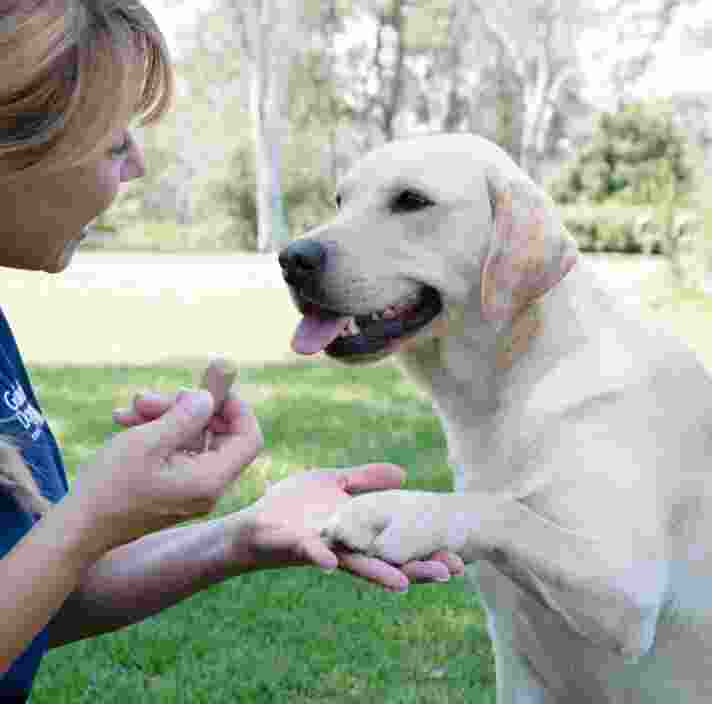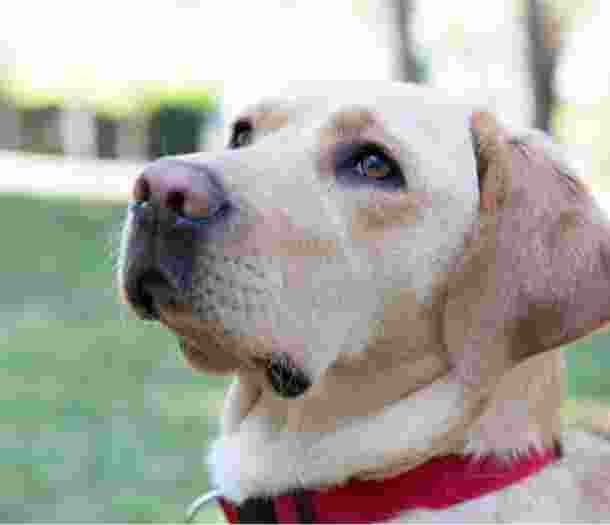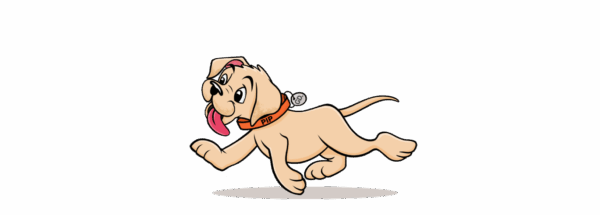On this page:
About our dogs
There’s a reason we’re called ‘Guide Dogs’.
For decades now, Guide Dogs have been a beacon of joy and opportunity – not only for people living with vision and mobility loss, but for many other Australians.
Vision loss can be a confronting and challenging experience which can leave people feeling isolated in their own communities. Limited vision impacts a person’s feelings of security, independence, social health and confidence as they navigate their community and undertake the daily tasks many of us take for granted.
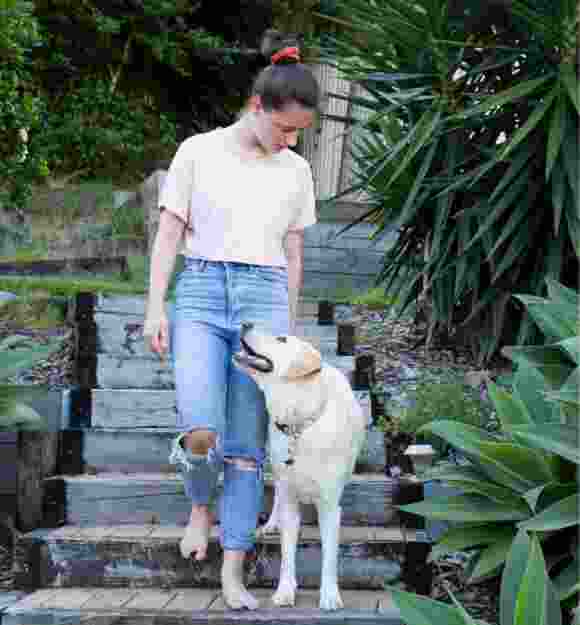
A Guide Dog completely changes this and can totally transform a person’s life. A Guide Dog helps their handler navigate the world and continue doing things like going to the shops, getting to work and moving through crowds safely and independently.
Our Guide Dogs provide so much more than just mobility benefits. They can enhance social participation, well-being, and encourage their handler to try new experiences and challenges.
What to expect with a Guide Dog
The key to success lies in experience and attention to individual detail.
Every training support is based on personal preference. We identify yours early on, so we can select the best dog specifically for you.
Our Guide Dogs take part in safety and relationship training, and detailed behavioural analysis from an early age. We learn each dog’s skills and temperament to gain an intimate understanding of how they might eventually match yours.
We take the same thorough approach to educating the community about the valuable work of a Guide Dog. Learn the story of how puppies grow into Guide Dogs, understand the best way to interact with a person and their working dog, familiarise yourself with where a Guide Dog can and cannot go, and learn about different career paths for puppies.
It is important to be aware of your rights when travelling with a Guide Dog.
It is also worth knowing the legal obligations of other people in the community, or the responsibilities of business owners and employees.
Increased understanding will benefit everyone by creating a safe and welcoming environment in shops, restaurants, vehicles, theatres and other public areas. Learn where Guide Dogs can legally travel, access the relevant legislation and more.
The journey of a Guide Dog
Every Guide Dog starts in the Guide Dogs Nursery.
The journey of every Guide Dog starts in the Guide Dogs Nursery, where the pups begin their early development from the time they are born.
They live in the nursery until they are about eight weeks old and during this time are exposed to different objects, sounds, lights and textures that they might encounter in the real world.
Every puppy is nurtured by our dedicated Canine Care Team until they are ready to head out into the big wide world with their Puppy Raiser. They remain in the puppy raising program until around twelve to fifteen months of age.
When a dog is ready to start the training program, each dog is allocated to one of our experienced trainers who they will work with for five months to learn all the essential skills they need to be a great Guide Dog.
The success of our incredible dogs greatly depends on our team of dedicated trainers. They are responsible for teaching every dog that goes through the training program a wide range of skills, beginning with simple tasks and then moving on to more complex commands as they advance.

Encouraging skill development and good behaviour
All animals, humans included, require motivation to repeat a behaviour.
When puppies are participating in Guide Dog training or learning new skills, we motivate them through ‘positive reinforcement.
The positive reinforcement method is the best technique for training well-bonded and reliable Guide Dogs who enjoy learning.
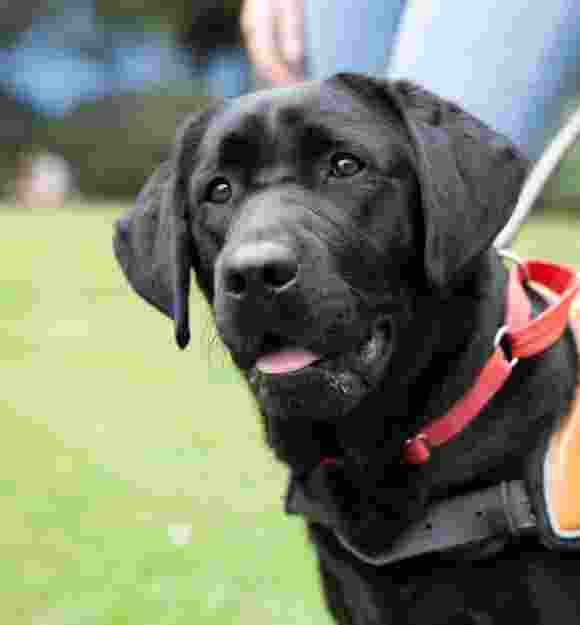
Our dogs learn how to:
- Respond to their handler’s instructions
- Locate safe road crossing points and stop at kerbs
- Cross roads in a straight line
- Guide their handler around stationary obstacles like chairs and signposts
- Avoid height obstacles such as overhanging branches
- Avoid obstacles like pedestrians, prams, trolleys and bicycles
- Locate objects and destinations such as seats and stairs.
Guide Dogs spend plenty of time training in the community, as this is where they’ll spend most of their time when they start working.
Places they regularly visit while in training include residential neighbourhoods, shopping centres, public transport and the Brisbane CBD.
When a Guide Dog-in-training is ready to be placed with its new handler it is able to consistently demonstrate that it can carry out the role safely and effectively.
Preparing Guide Dogs for partnerships
Each Guide Dog team has a very special bond.
The extraordinary relationship between a Guide Dog and their handler is as much about love, friendship and trust as it about independence and mobility.
A Guide Dog can change the life of someone with vision loss by offering the perfect blend of both independence and companionship. After spending so long in training, it’s important we match them with the right handler to ensure they work together successfully.
When a Guide Dog completes the training program, they are assessed on how they will best meet the needs of the people on our Guide Dog waiting list. Just like humans, every dog is very different and has their own strengths and personality traits.
During the process of matching a Guide Dog with their handler, we take into account a range of factors including the personality of both the dog and person, as well as their needs and lifestyle to ensure they’re the perfect fit.
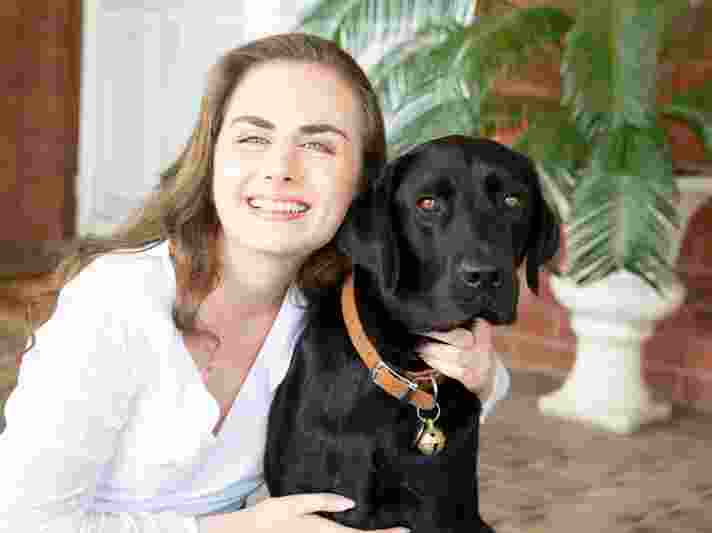
Interacting with a Guide Dog
Tips to remember if you encounter a working Guide Dog Team.
It takes a lot of training and concentration for a person with vision loss to work safely with a Guide Dog. These teams rely on your help to be able to continue working together effectively.
Here are some tips to remember if you encounter a working Guide Dog Team:
- Always talk to the person, not their Guide Dog. Not only is it polite, but when a Guide Dog is working it needs to concentrate.
- When a Guide Dog is in harness or coat, it is working. Whether it is walking, sitting or sleeping, it should not be distracted.
- If you think a person needs assistance, ask them first. Never grab the person, the Guide Dog or its harness without permission.
- Make sure your pet dog is on a leash and under control in public. Having your dog on lead prevents them from distracting a working Guide Dog.
- If you see a stray pet dog, contact your council. Uncontrolled dogs could distract or harm a Guide Dog and their handler.
- A Guide Dog shouldn’t be the centre of attention. Always ask the handler first if it is okay to interact with their Guide Dog.
Where can Guide Dogs go?
Working Guide Dogs can go anywhere.
Guide Dogs can go almost everywhere their handler goes, including shops, hotels, restaurants, public transport and taxis. Their right to enter public places is protected by law.
It’s important to remember that if a Guide Dog is refused entry somewhere, so is their handler. Refusing entry is a form of disability discrimination and it is against the law.
When a Guide Dog is in a coat or a harness, it is working to assist its handler to move around safely. Guide Dogs and their handlers are allowed to go anywhere legally under the Guide Hearing and Assistance Dog Act 2009.
A Guide Dog is trained from a young age and undergoes extensive training to learn how to behave in public areas. They learn how to help their handler get on and off modes of public transport safely and they learn how to behave in public spaces. For example, when a Guide Dog and its handler go to a restaurant or café, the dog is taught to sit under the chair or table so it will not be in the way of patrons or staff.
To find out more about Guide Dog Access Rights, click here to read the Queensland Government Guide, Hearing and Assistance dogs Act.
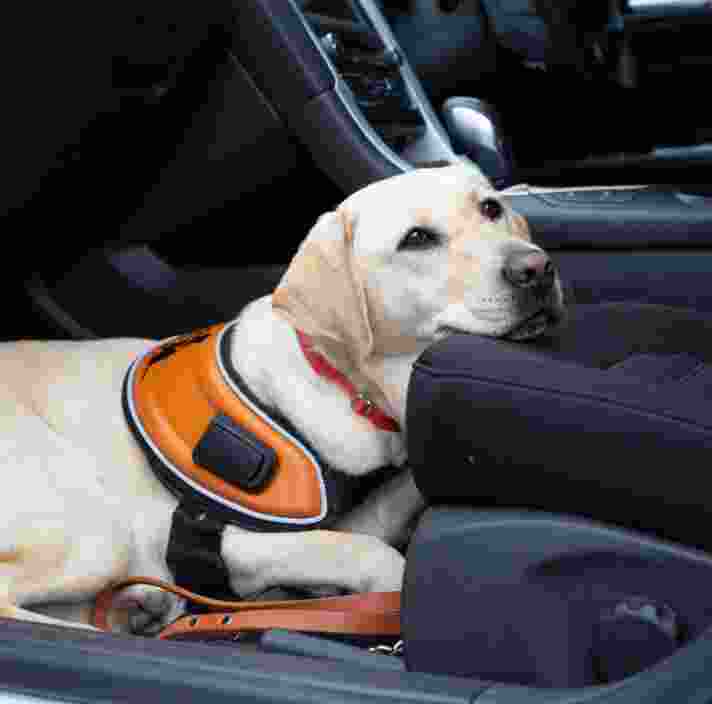
Learn about dogs with different career paths
For a dog to qualify as a Guide Dog, it must meet an exceptionally high standard.
Dogs in the training program are continually assessed to show they have the right skills and temperament to become a working Guide Dog.
Although not all dogs and pups are suited to our Guide Dog program, they can follow different career paths such as becoming a companion dog, or being rehomed with loving families to bring happiness to people in a number of ways.
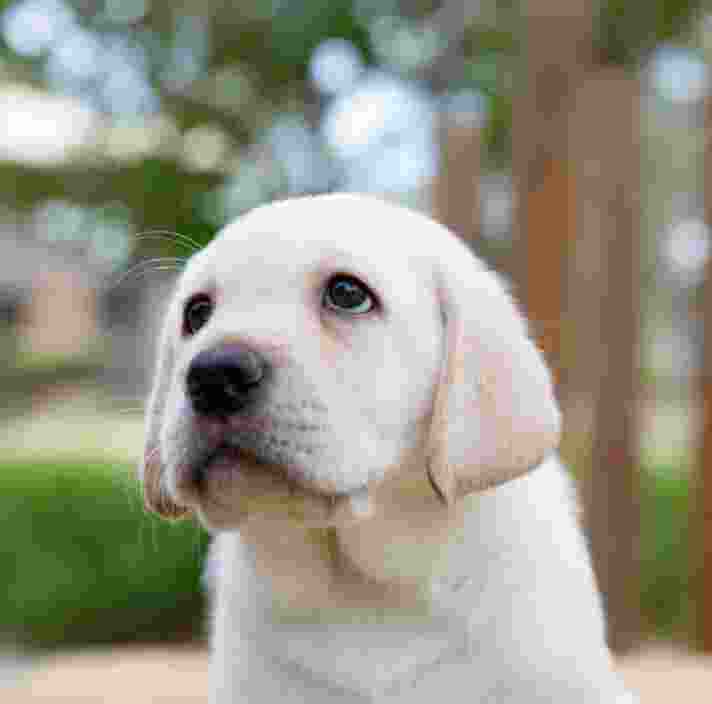
Training and Certifying Guide Dogs
Why we only train dogs in our program
At Guide Dogs Queensland, we are only able to train and certify dogs that come from our carefully managed breeding and training program. This ensures every Guide Dog meets the highest standards in health, behaviour, and performance to safely support people with low vision or blindness.
If you are seeking information about having an existing dog trained or certified, we recommend visiting the Queensland Government’s list of approved trainers and training institutions for further guidance.
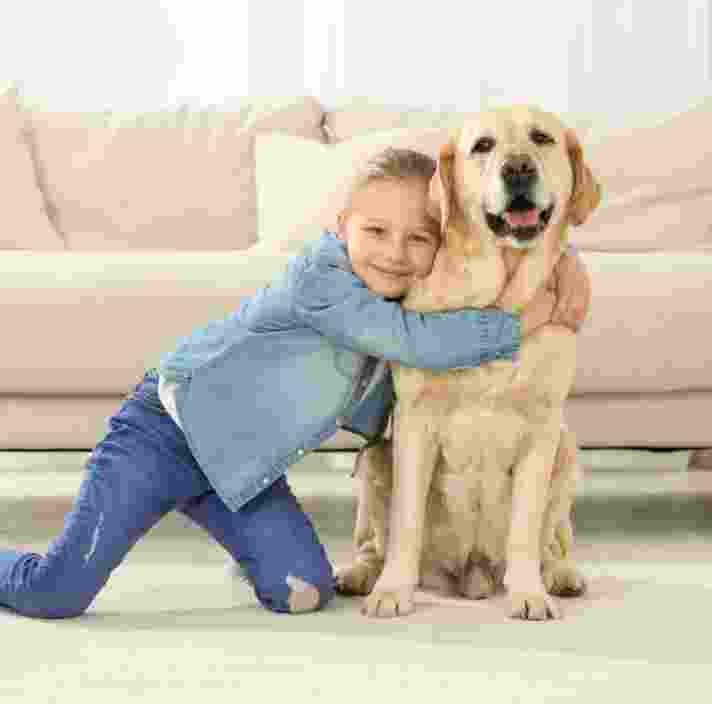
Get involved
Support our dogs, support your community!
By getting involved in our community, you’re helping us to provide life-changing services to help more people living with vision and mobility loss.
